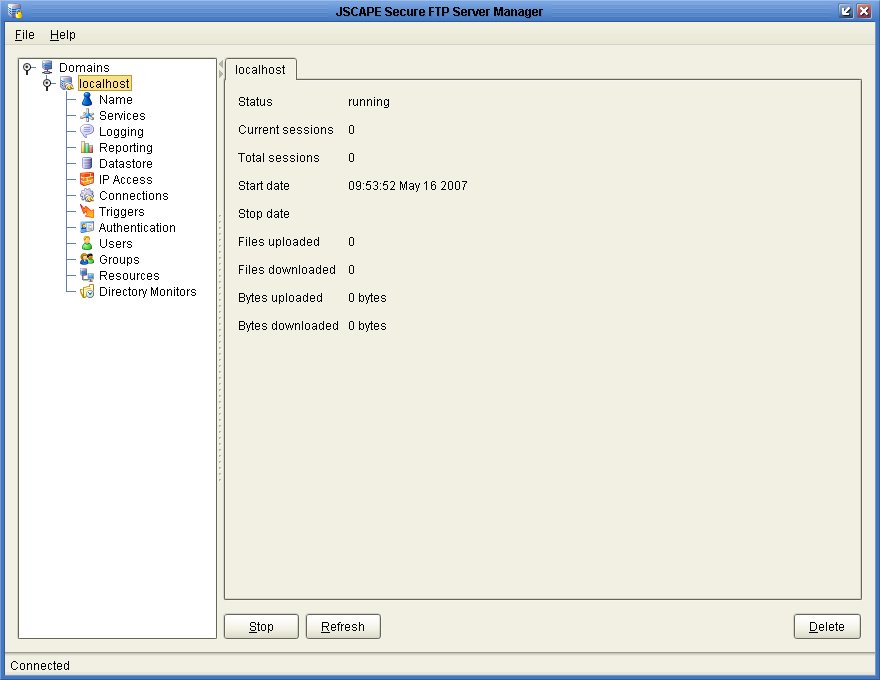

- File secure server generator how to#
- File secure server generator install#
- File secure server generator password#
Steps to generate Public Key are listed in the section below. You will need to configure your SFTP client with both. Import (SSH Public Key) - SiQ will generate a unique username and expect you to supply the SSH Public key you would like to use.
File secure server generator password#
Import (Password) - SiQ will generate a unique username and password for you to use with your SFTP client.SiQ will perform the following actions based on your selection: The SFTP dialog displays and it contains an Import (Password) tab and an Import (SSH Public Key) tab.ĭepending on the authentication method you want to use, select either: From the left menu, click Employee Import.You can either search for SFTP in the Search field or navigate to SFTP tile. From the Third Party Integrations area, click the READ MORE link.From the left menu, click Integrations.Click your Profile Name in the top right corner.SiQ will automatically pick up the file and load it into your system.įrom the SiQ Web App, complete the following:.Upload the import file via SiQ-hosted SFTP server.Create an automated script that extracts the appropriate data from your HR systems.Data extraction from your HR System using the correct file format, data requirements, and import template.You will need to organize the following with your IT Team:
File secure server generator how to#
This article describes a high-level overview of how to set up SIQ to import employee roster information from customers’ HR systems. Then SiQ will automatically pick up the file and load it into your system. Your IT team can create an automated script that extracts the appropriate data from your systems and then upload it via SFTP to our servers. One common method used to import employee data is SFTP (Secure File Transfer Protocol) and this can be used to maintain the on-boarding and off-boarding of staff. If you decide to use Azure Key Vault, you can use it with variable groups.SiQ supports a number of integration options to automate the Employee data import process and enable employee access to SiQ features. The secure storage doesn't have any certifications.Īzure Key Vault is another, more secure option for securing sensitive information. The rights to retrieve secure keys are only given to the Azure DevOps service principals and (on special occasions) on-demand to diagnose problems. The keys are also rotated with every deployment of Azure DevOps. So, two regions don't share the same keys. The keys are specific to each scale unit. The keys to decrypt secrets are stored in Azure Key Vault. Secrets are encrypted and stored in the database. Q: How are secure files secured?Ī: Secure files, variable groups, and service connections are all secured in the same way in Azure DevOps. Q: Why do I see an Invalid Resource error when downloading a secure file with Azure DevOps Server/TFS on-premises?Ī: Make sure IIS Basic Authentication is disabled on the TFS or Azure DevOps Server. Review and modify the access for each available pipeline.Select the Pipeline permissions button.Select the secure file you want to authorize.Select the Secure files tab at the top.In Azure Pipelines, select the Library tab.Q: How do I authorize a secure file for use in a specific pipeline? What do I do?Ī: Make sure your agent is running version of 2.116.0 or higher. Q: My task can't access the secure files. To handle secure files during build or release, you can refer to the common module available here. See the reference documentation and source code.
File secure server generator install#
The Install Apple Provisioning Profile task is a simple example of a task using a secure file. Sudo ln -s -t /etc/ssl/certs/ $(cureFilePath)įAQ Q: How can I create a custom task using secure files?Ī: Build your own tasks that use secure files by using inputs with type secureFile in the task.json. task: caCertificateĮcho Installing $(cureFilePath) to the trusted CA directory. The following YAML pipeline example downloads a secure certificate file and installs it in a Linux environment.


 0 kommentar(er)
0 kommentar(er)
